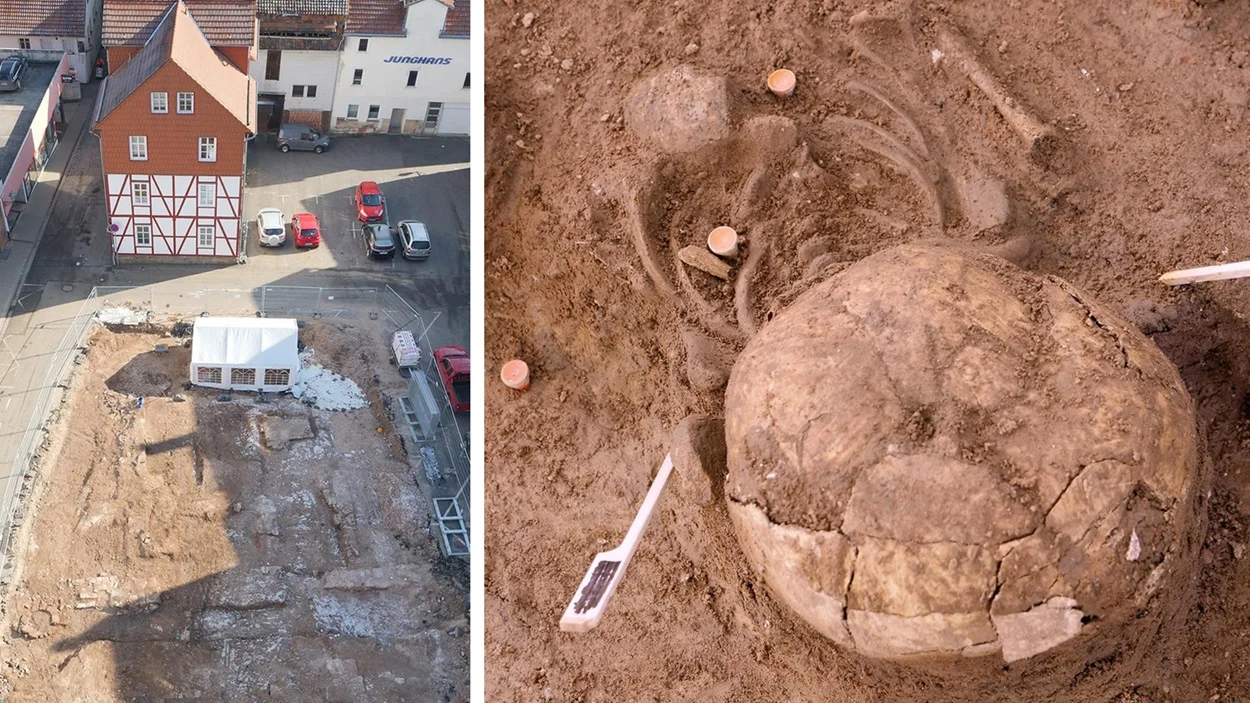Construction works to transform a former car park into a public space has revealed the remains of a medieval church.
Situated near the Nikolaiturm in Eschwege, Germany, the structure’s massive hewn limestone foundations suggest it once covered an area of 50 by 40 metres.
Archaeologists from Hessen Archaeology have identified the church as the former St. Godehard, a church named for Gotthard of Hildesheim, a German bishop venerated as a saint.
The earliest known reference to St. Godehard dates from 1340 during the Late Middle Ages, however, archaeologists suspect that earlier Christian churches once stood on the site.
The church was abandoned following the Protestant Reformation during the 16th century, leaving only the Nikolaiturm tower surviving which later served as a fire station and observation tower.
Excavations have also unearthed the remains of 30 children, including newborns and infants. The skeletal remains were buried outside the church’s chancel on the perimeter of the walls in densely packed burials.
Known as “eaves children”, a tradition emerged of burying unbaptised children near church walls where rainwater from the roof would drip onto their graves.
Excavation director Anja Rutter told Hessischer Rundfunk: “The closer you bury the dead to the altar area, the greater the chances that the responsible saint will come to his church on the last day and collect the souls at the same time.”
“There is also the idea that the dripping water from the roof of the church is something like baptismal water, which brings the children even closer to the protection of the church,” added Rutter.
Header Image Credit : Thomas Kurella
Sources : Hessischer Rundfunk





